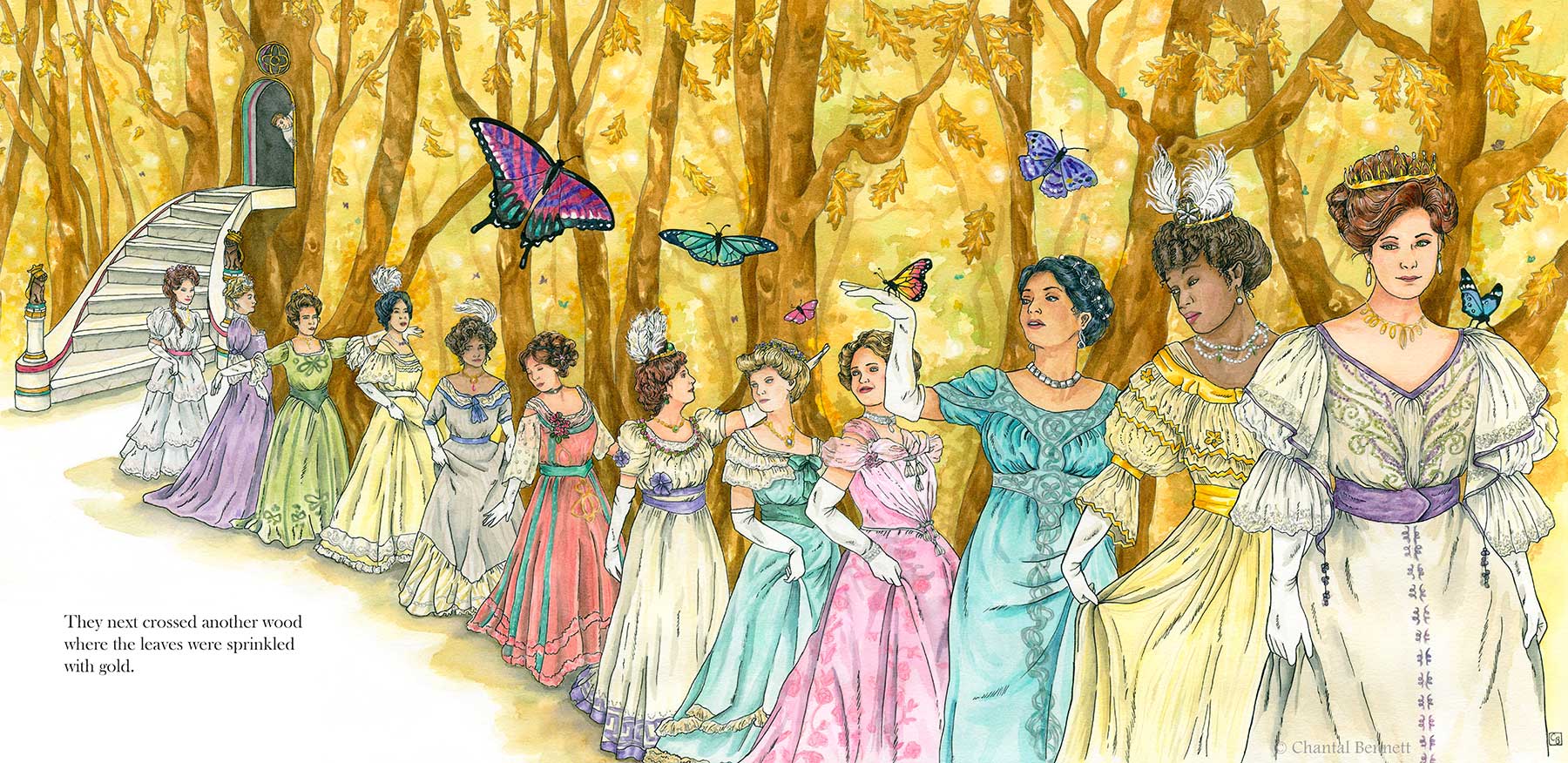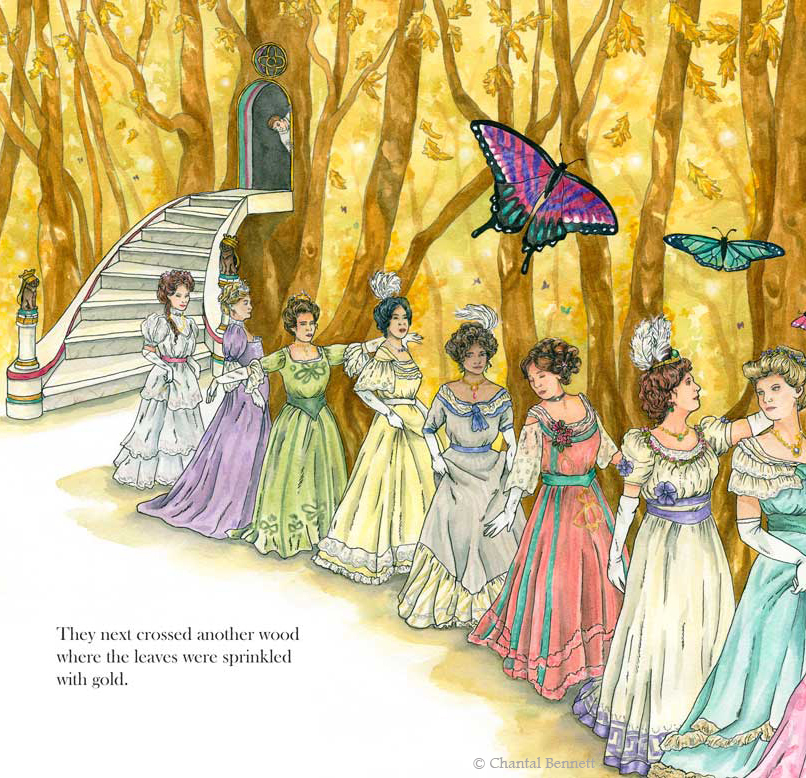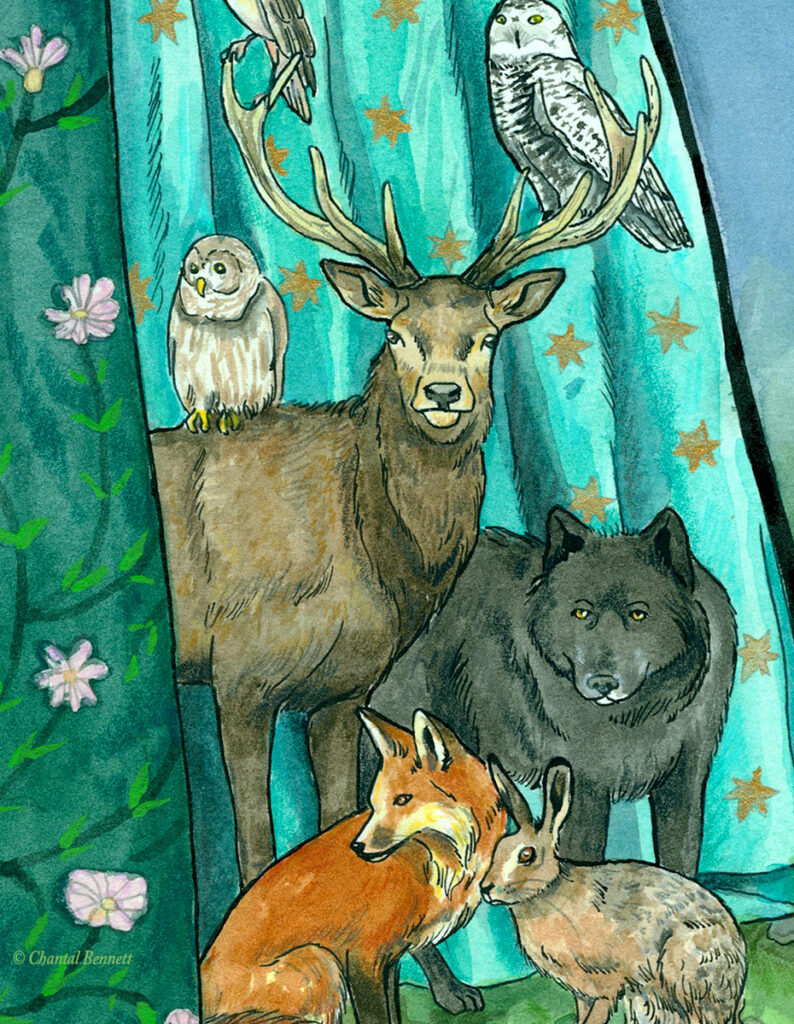Fin de 2021
Here’s some recent work completed in the final days of 2021.





Illustrator
Here’s some recent work completed in the final days of 2021.






Twelve Dancing Princesses
This piece took me AGES, but it was so much fun. It measures almost an entire sheet of watercolour paper (30″ in width), so I went big with it. I totally indulged in the costume designs, since the fairytale focuses a lot on the fine clothes that the princesses are wearing. I would love to illustrate the entire tale one day.





It’s been awhile since I’ve painted on a large scale, so for this piece I opted to go bigger to get all the detail in (16×20″). Inked first then painted in watercolour and gouache.
Lately I’ve been contemplating how humans are so busy being humans, that we forget that we are not the only inhabitants of this place. We forget that we share it with other living beings, and that we should act as their protectors and stewards of their habitat, not as their exploiters. The Great Lockdown has shown that reduced human activity has been a gift to wildlife; locally, from less turtle deaths on the road due to reduce car traffic…to internationally, with orcas being able to communicate properly due to less boat traffic.
Hence this painting, entitled La Madone des bois. It’s inspired by a 15th century Madonna sculpture I saw in Florence last year.



When Joel and I travelled to Scotland two years ago, I was very much influenced by the landscape. While we were visiting Dunvegan Castle on the Isle of Skye (the seat of Clan MacLeod), I saw a tiny little exhibit in the hall with artefacts from the island of St. Kilda. It said St. Kilda was the most remote island in the Outer Hebrides and the people lived there for thousand of years in almost complete isolation, until 1930 when the last residents requested to be evacuated. Evacuated, I thought? I was intrigued, so I picked up a book in the castle’s bookstore called The Island on the Edge of the World: The Story of St. Kilda and it was fascinating.
The small island was such a hostile environment and yet the St. Kildans managed to eke out a living for a thousand years, subsisting mainly on fowling (catching and eating seabirds) and exporting wool products later on. Their culture was primitive, pagan and completely unique until the 19th century, when advances in technology meant that ships could regularly make trips out to the island, bringing mainstream religion and tourism with them. It’s acknowledged in the book that this is what ruined the St. Kildans. The St. Kildans became dependent on tourism and the money it brought (money was a foreign concept to them before then, but rather they bartered and traded) and their traditional way of life started to become obsolete. Knowledge of the wide world resulted in some St. Kildans becoming restless and unsatisfied with their traditional way of life. Finally in 1930, the handful of residents left on the island asked to be evacuated, as it became unsustainable for them to continue living there. The village is now mostly in ruins with a couple of restored buildings and is maintained by the National Trust for Scotland. Joel and I did not have time to go there (it’s quite an ordeal to get there), but one day we will!
There’s so much more I could say about St. Kilda, but I highly recommend reading the aforementioned book. I did a series of illustrations influenced by St. Kilda and the other parts of Scotland I have seen.

Cairn – this illustration is inspired by belief held by St. Kildans that the soul transmigrates and departs the body in the form of an animal; a white moth, in this case.

Cleit Girl – The ruins of “cleits” dot the landscape of St. Kilda and some are believed to be a thousand years old.

The Sluagh – St. Kildans believed in the Spirit Host bird phenomena (known locally as the “Sluagh”). a spirit geese formation accompanied by a west wind that could pick up a man and transport him over long distances.

Hirta – inspired by the women of St. Kilda

The Fowler – inspired by the men of St. Kilda who went “fowling” for birds and the idea of isolation.
In preparation for mine and Joel’s trip to Wales this spring, I have be re-reading the Mabinogion (collection of Welsh folktales). I’ve always been inspired by Celtic mythology to create my illustrations, so I’m hoping that a trip to the actual place will add another layer of inspiration to my work.
This is Rhiannon on her white horse when she is first glimpsed by Pwyll.

